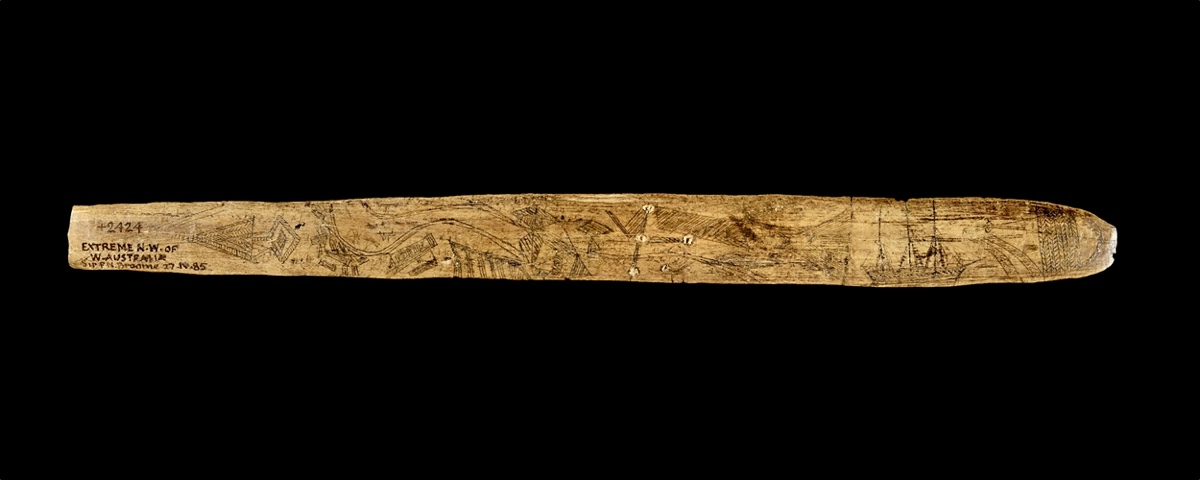Before the Overland Telegraph, Australia Post, or 5G, Aboriginal people were capable of accurate communication over immense distances. Right across the continent, a network of messengers carried important information between nations with the aid of marked wooden objects.
Known to settlers as ‘message sticks’, they have been largely overlooked by the scientific community. The most significant observations about them were published more than a century ago.
UNE linguistic anthropologist, Dr Piers Kelly, will begin an in-depth study of message sticks after winning an Australian Research Council (ARC) Discovery Early Career Researcher Award (DECRA) grant. His multi-year research project will seek to understand how message sticks encoded information, and how they were used in varying ways across the continent.
"The first settlers to collect message sticks speculated that the marks were a form of writing. This was a challenge to the prejudice that Western ‘civilisation’ stood at the top of the ladder because it was seen to be founded on written records.” Dr Kelly said.
“But the settlers eventually concluded that message sticks were more about authenticating a spoken message, just like a royal seal. Or they authenticated the messenger – a bit like a passport”
"That seems to have been the prevailing attitude ever since. I was worried that I was overthinking message sticks, but the more I looked into them, the more evidence I found that they could be very informative."
"Some bore just a few basic marks to verify a spoken message. But others could be interpreted all by themselves. There are several cases of message sticks that were accurately ‘read’ without a messenger on hand to explain it”.
“Settlers failed to notice that Aboriginal people were already skilled graphic communicators, even without writing. They relied on a shared understanding of symbolic conventions and codes of interaction in order to inscribe and then interpret these amazing tools.”
Dr Kelly’s interest in Australian message sticks began when he was working at the Max Planck Institute in Germany as part of a research group studying graphic codes. A search of collections in Germany, Britain and Australia turned up a range of material relating to message sticks, but little of it was adequately documented at the time it was collected.
Relying only on Indigenous definitions of ‘message stick’, Dr Kelly will attempt to reconstruct how they carried meaning in real-life communications and how the practice spread and varied across Australia.
Message sticks were still used in Arnhem Land until the 1970s, and Dr Kelly will continue recording elderly ‘rememberers’ in this region with the assistance of regional art centres. Today, message sticks have been revived by Indigenous leaders for forging alliances with settler institutions or making political demands. Robert Menzies, Bob Hawke and Prince Charles have all received message sticks.
Before the project begins, Dr Kelly is collaborating with Dr Lorina Barker, an Indigenous oral historian at the University of New England. Together they are investigating rare message sticks at the Australian Museum, created by Dr Barker’s Muruwari forebears. Their hope is to map their journeys and restore precious knowledge of this system to Muruwari people today.


